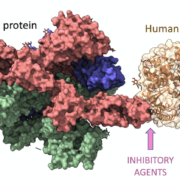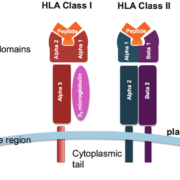Unlocking the Mysteries of Immunity: A Deeper Look into the HLA-A Gene
Introduction
Human Leukocyte Antigen-A (HLA-A) plays an instrumental role in the immune system, gaining increasing recognition for its diverse influences on our bodies’ defense mechanisms. HLA-A gene, a part of the major histocompatibility complex (MHC) class I, is central to our immune function, shaping how our bodies respond to antigens. This article will delve deeper into the function of the HLA-A gene, outlining its remarkable impact on our immunity.
Understanding the HLA-A Gene
HLA-A gene, located on the short (p) arm of chromosome 6, occupies a vital position among the many MHC Class I genes. This gene is responsible for producing the HLA-A protein, a member of the MHC class I molecules. Among their key duties, these molecules present foreign substances (antigens) derived from pathogens such as viruses, bacteria, and cancerous cells to T cells, a type of white blood cell. This antigen presentation triggers a cascade of immune responses, including the destruction of infected or malign cells.
The HLA-A Protein
A Prime Defender When pathogens infiltrate our body, they start proliferating by hijacking our cells and replicating their genetic material within them. The HLA-A protein, residing on the surface of each cell, is at the forefront of the battle. During pathogen infection, the HLA-A protein binds selected small fragments of the pathogens’ proteins, also known as antigenic peptides. This antigen-peptide/HLA-A complex is then transported to the cell surface where it can be ‘recognized’ by the T cells. Following this, the T cells spring into action, working to eliminate the malign or infected cells and thus, containing the infection.
Polymorphism
A double-edged sword One remarkable feature of the HLA-A gene is its high degree of polymorphism. This means that there are many different variations or alleles of this gene in the human population. Polymorphism is crucial as it allows different individuals to present and respond to a wide range of antigens. However, this polymorphism can come with its drawbacks. Certain alleles of HLA-A are associated with an increased susceptibility to specific diseases. For example, the HLA-A*31:01 allele has been linked with a greater risk of severe reactions to certain medications, while the HLA-A*29:02 allele increases the probability of developing birdshot uveitis, a form of eye inflammation.
Conclusion
The role of HLA-A gene in our immune responses cannot be ignored. Its function in antigen presentation is central to tackling infections, and its polymorphism impacts the spectrum of antigens the immune system can handle. As research continues to delve deeper into the HLA system, a better understanding of this gene could open doors for more tailored and effective treatments for a variety of diseases and adverse drug responses. Keeping up with the advancements in this field is essential in safe and precise patient care, as immunity is our prime defense system. As such, it remains integral to continue expanding our knowledge about this multifaceted gene: the HLA-A, and its intricate role in immunology.

 The Sequencing Center
The Sequencing Center




 The Sequencing Center
The Sequencing Center
 The Sequencing Center
The Sequencing Center
Leave a Reply
Want to join the discussion?Feel free to contribute!